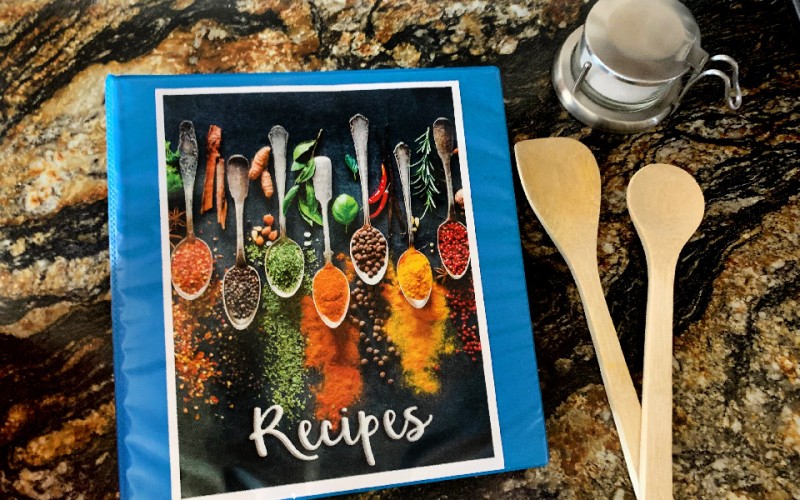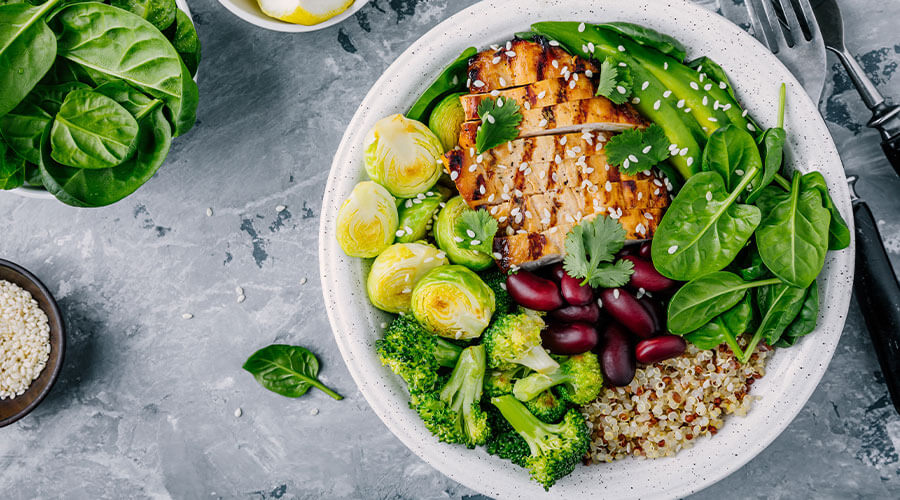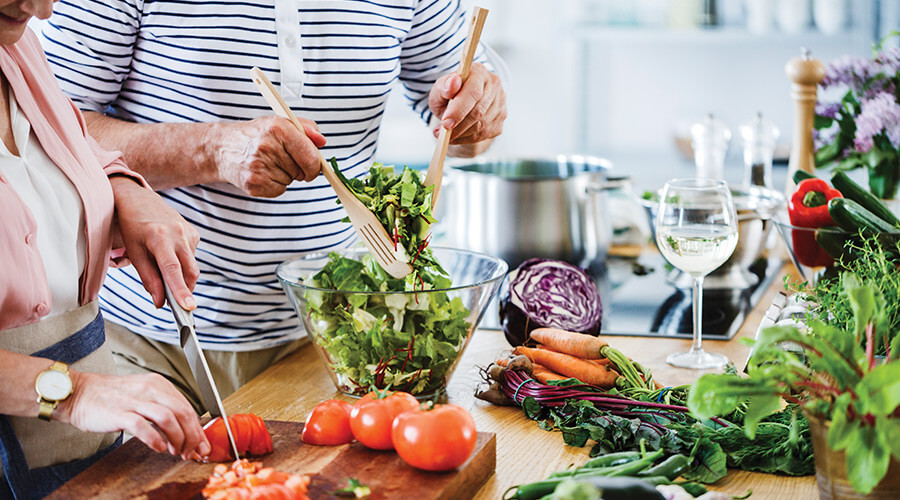I have a confession. I don't like to cook.
I also don't like to plan menus. Or shop for groceries.
Over time, this has resulted in many frustrating trips to the grocery store, countless fast-food runs and weight gain from poorly planned meals.
But now, after years of tweaking my system, I have finally reached a place where I can tolerate meal planning, shopping and cooking. And, sometimes, I even enjoy it.
Want to know my secrets?
Recipes: Have everything in one place
If you're like I was, you have recipes everywhere and in many different formats. Some might be in your favorite cookbook. Some might be bookmarked on your computer. Some might be in your recipe file, lovingly written in your mother's or grandmother's handwriting.
One of the keys to easier meal planning, shopping and cooking is organization. Bringing everything into one place will save time and frustration.
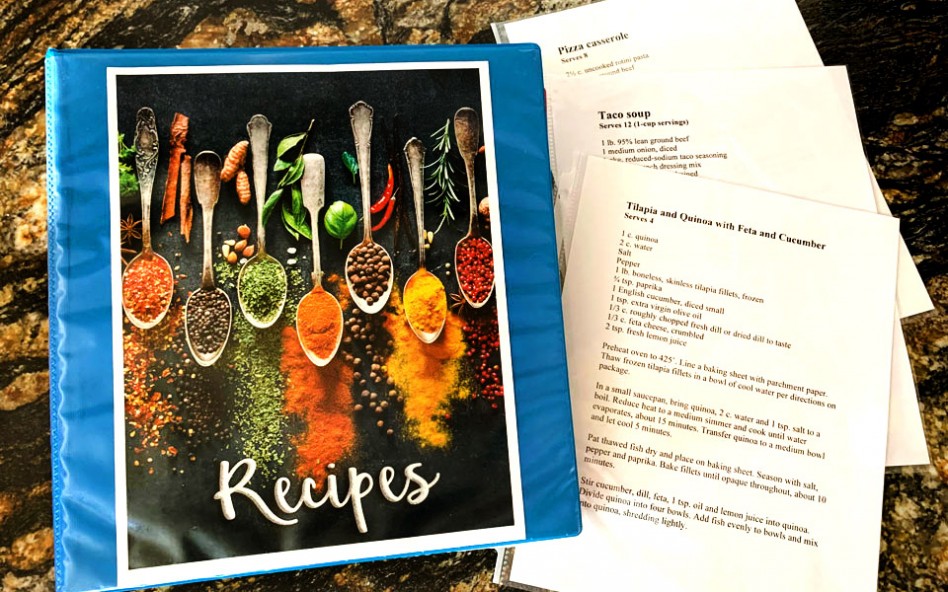
My recipe book is a three-ring binder where I keep all the recipes in my menu plan. Over time, I have typed these recipes into easy-to-read electronic documents and tweaked them to my family's tastes. Each recipe is printed on a sheet of paper and inserted into a plastic sleeve, so it can be pulled from the recipe book to be referenced while making my shopping list and cooking.
If you can't part with those handwritten recipe cards, that's OK. Those can be included in the plastic sleeve, either by themselves or along with the typewritten sheet.
If you don't have a lot of favorite recipes, find some. Ask friends and family to share their favorites, or think about the types of things you like to eat — or the foods you should be eating more of — and do some internet searches. You will find plenty of ideas. Many recipe websites come with a handy print feature, for ease in adding to your collection.
Here are a couple of my family's favorite recipes:
Meal plan: Write it down
More than 10 years ago, I began tinkering with a written meal plan. Over the course of that decade, I refined my plan until it takes very little effort on my part to come up with my weekly menu.
Your meal plan should reflect the things that are important to you. You may need recipes that are:
- Simple, with five or fewer ingredients.
- Quick to make or prepare, for those with less time or patience for cooking.
- Built on healthier recipes, or special diets such as low carb or reduced salt.
- Food that you — and your family, if you have children living at home or a picky spouse — enjoy eating. (This is the biggest key to making this process work!)
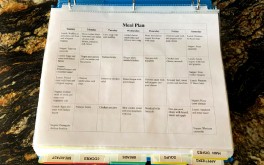
But while having a meal plan is important, it's also important to be flexible. If it's too rigid, you won't stick to the plan.
- Got extra? Use it. If you have leftovers, they can take the place of making something from scratch for one or more of your meals. Or, leftovers can make great lunches.
- Going out? Plan for it. If you eat out with friends every Friday night, include that in your meal plan. Or adjust the plan for special occasions.
- Thumbs down? Ditch it. If you decide you don't like something on your menu, or you get tired of it, don't be afraid to remove it and replace it with another recipe.
- Not feeling it? Swap it. If you don't have time or don't feel like making something on a particular night, swap it out for one of the other recipes for that week.
- Change of plans? Move it. If you end up straying from your meal plan by eating out, ordering in or for various other reasons, that meal can be carried over into the following week, to ensure you use up the ingredients you purchased.
Write your meal plan in an organized manner. My meal plan is a document that covers a four-week span filled with different recipes each night of the week, and includes lunches on the weekends. (Only a few recipes — family favorites — are repeated over the four-week period.) Once I've gone through the four weeks, I start over at the beginning of the plan.

Once you have your monthly meal plan written down, you can break it into weekly chunks. For quick reference, I have a menu board in my kitchen where I display the week's menu.
I've found many advantages in having a meal plan, including:
- I don't have to think about what to make for supper, I just follow my meal plan.
- With our menu board, I don't have to answer the question "What's for supper?" anymore. Anyone in the family can look at the board and know immediately.
- Grocery shopping is simpler and much less painful. I am less prone to buying things that aren't on the menu.
- We eat more healthfully, as that is built into our meal plan.
- There is less food waste, as we only buy what is needed for each meal's recipe.
The shopping list: Routine is key
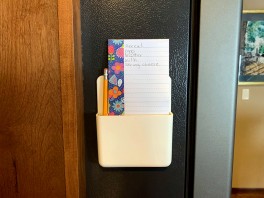
Once our weekly meal plan is set, I pull the recipes from my binder to make my shopping list.
I keep a master shopping list on the side of my refrigerator, so items can be added as needed.
On the evening specified for meal planning and shopping-list making (for me that's Monday night), I take the master shopping list off the fridge and add the ingredients needed for each recipe on the menu board.
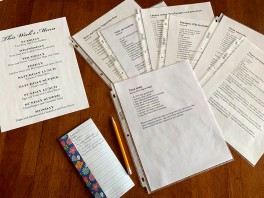
Shopping: Options reduce stress
Once the shopping list is complete, there are several options for buying groceries:
- Shop for yourself. If you live in a small community or don't mind grocery shopping, you can head to the grocery store and purchase your supplies. Be sure to stick to the shopping list to avoid unnecessary purchases (which can be bad for your pocketbook and your waistline).
- Have someone else help out. If grocery shopping is troublesome for you, ask your spouse, an adult child or a friend to come with you, or have them do the shopping for you.
- Have the store shop for you. If available in your area, you can order your groceries online. Once you familiarize yourself with the store's system, it can take less time to place your order online, and you won't have to wait in line at the checkout. Some stores will allow you to pick up your groceries in their drive-through, and some have a home delivery option. Check with your local stores to see what they offer.
I order my groceries online and have them delivered, which saves time and reduces the stress I feel from pushing that cart through the store searching for my items. And it keeps me from getting distracted by that new ice cream product or my favorite bag of chips.
Cooking: Change your mindset
Once your groceries are in the house, you're ready to make your meal plan work.
Be sure to allow enough time in your day to prepare your meals. If possible, cook with another person to divide up the duties. Make it a social occasion rather than another chore to be completed. Many times, my husband chops vegetables while I'm cooking, which speeds up the preparation time and allows us to spend more time together.
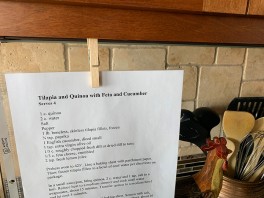
Practice the technique of mise en place, a French term that means to gather all your ingredients before you start to cook. This will not only ensure you have the ingredients you need, but it can also speed up the cooking process.
Enjoying cooking might require a change in perspective. If you feel like cooking is a time-consuming chore, try turning those thoughts on their head. Add up the time it takes to choose a restaurant, drive there, wait in line, order and wait for your food. You could easily prepare a meal in that amount of time. You will also, more than likely, save money by preparing meals at home.
Remind yourself that many people consider cooking a pleasurable hobby that teaches them lots of different things, such as structure, organization, creativity and patience. Your meal might taste more delicious when you've made it yourself, especially if you have tweaked the recipe to your specific palate.
When you're cooking, turn on some music and make it a fun event. Experiment with herbs and spices. You might even want to watch a cooking show or two for inspiration.
Leftovers: Integrate into your plan
If you have leftovers, they can be part of your meal plan. You can make extra of a particular recipe so it can be used in future meals. For example, I make a large amount of taco soup one night and serve with corn muffins. The following evening, I serve the soup with grilled cheese sandwiches.
Leftovers can also be eaten for lunch. I recommend purchasing single-serving-sized, microwavable storage containers. They are easy to transport and easy to pop into the microwave for a quick but delicious meal.
Do you need assistance with meal planning, shopping or cooking?
A work in progress
Your meal plan probably won't come together overnight, but the more you tweak it, the easier it should become. As a work in progress, it should change as your lifestyle and nutritional needs change.
Looking for more ideas?
Author Kristy Anderson has a collection of easy recipes she uses in her meal planning system. Complete the form below to receive your copy.
Questions for Kristy? Leave them in the comments at the bottom of the page.

